Newest OKC construction will connect the latest car-free transportation: 100 miles of trails
The Deep Fork River is not a recreational spot for Oklahoma City residents, but that’s about to change with the creation of a trail along the shoreline that will complete a miles-long connection between the city’s Adventure District and Lake Hefner.
Construction of the trail is described by contractors and parks officials as the most complicated part of growing the network to 100 miles. The cost and effort is seen as well worth it
The trails, started 40 years ago with a 1.5-mile stretch at Lake Hefner, is now being looked at as not just a recreational venue, but part of a transformation of transportation in a city that spans 621 square miles.
“This is all part of Oklahoma City being a big-league city,” said Melinda McMillan-Miller, parks director. “All cities our size have a trails network. For us, these are linear parks. That’s how we treat them, that’s how we program them.”
McMillan-Miller sees the Deep Fork trail as a key to connecting trails throughout the city. The $14 million trail will connect the Katy Trail at NE Grand and Interstate 44 to the North Grand Boulevard Trail at NW Grand and NW 63.
“It’s a natural water way river, and it’s pretty grown over,” McMillan-Miller said. “The trail is carefully cut into the area while protecting as much of the trees and wildlife as we can. Oklahoma City doesn’t have a lot of wooded areas.”
Brandon Boydston, the parks department’s planning and development manager, said part of the complication arises from the nature of the river itself, which can quickly turn from a meandering stream to high-water floodway.
The trail benefited, however, from being designed as the Oklahoma Department of Transportation was rebuilding the I-44 junction with Interstate 235, which crosses the river. Easements provided by the state allowed for construction of a series of bridges designed to keep pedestrians and bicyclists safe from rising waters that might result from heavy storm downpours.
“Whenever you build a trail around a body of water, a floodway can have so many issues you might not be aware of,” Boydston said. “You don’t want to have water washing away a bridge.”

E-bikes and trails provide more people the opportunity to travel car-free
The trails expansion coincides with the growing popularity of electric bikes that are seen as a viable travel option for those wanting to free themselves of the costs of buying, maintaining and insuring cars.
The National Bicycle Dealers Association reported earlier this year that e-bike sales in the United States in 2022 surpassed $1.3 billion, a 33% increase over 2021.
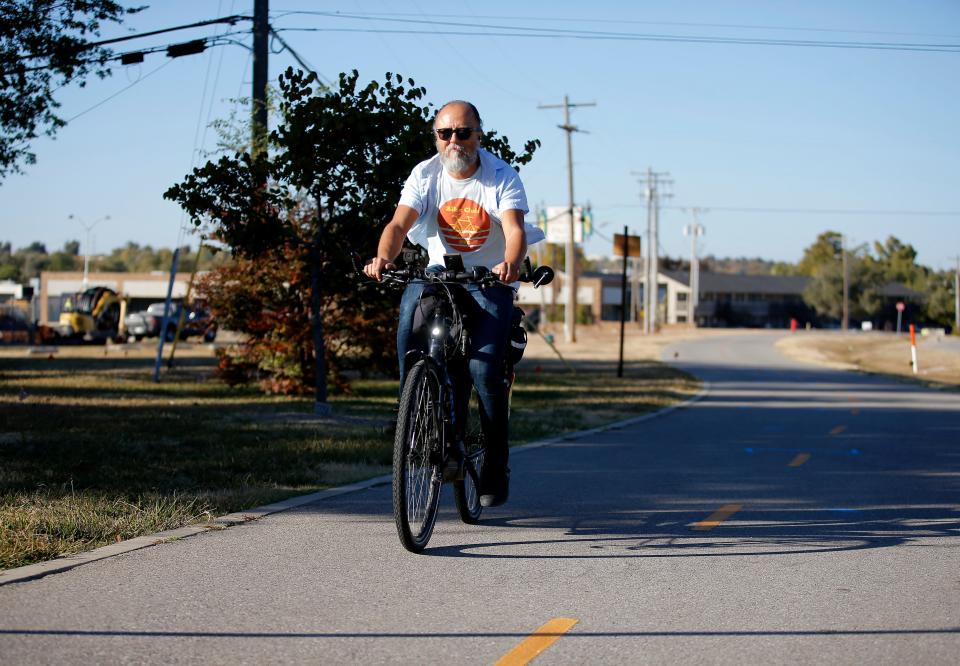
Shawn Wright, an avid user of the trails, uses his e-bike as a primary means of transportation to work, shopping and entertainment. He recalls seeing the South Grand Boulevard Trail being built when he lived in nearby Del City.
He bought his first bike as an adult in 2003 and took to riding it on the city’s oldest trails along Lake Hefner. A few more years would pass before Wright began to look at bicycling as an alternative means of daily travel.
“Since I lived in Del City, it wasn’t super obvious I could do biking like that,” Wright said. “But when I moved to Oklahoma City in 2007, things opened up more. And then we got Spokies (bike rentals) in 2011, and that really started things to roll for me.”
Wright said he started bicycling full time after buying his e-bike in 2019. Even as a self-described “power user” of the trails, Wright said the inclines and distances could prove tiring. He sees the expanding network and trails and the more affordable e-bikes as an opportunity to inspire more people to get around the city car-free.
“You have to be an athlete to go long distances otherwise,” McMillan-Miller said. “They help alleviate the issues we have with fatigue and anxiety of getting to areas quickly. A lot more people are willing to get on a bike now where before they might not be in shape to do it.”
Re-creating the Grand Boulevard beltway
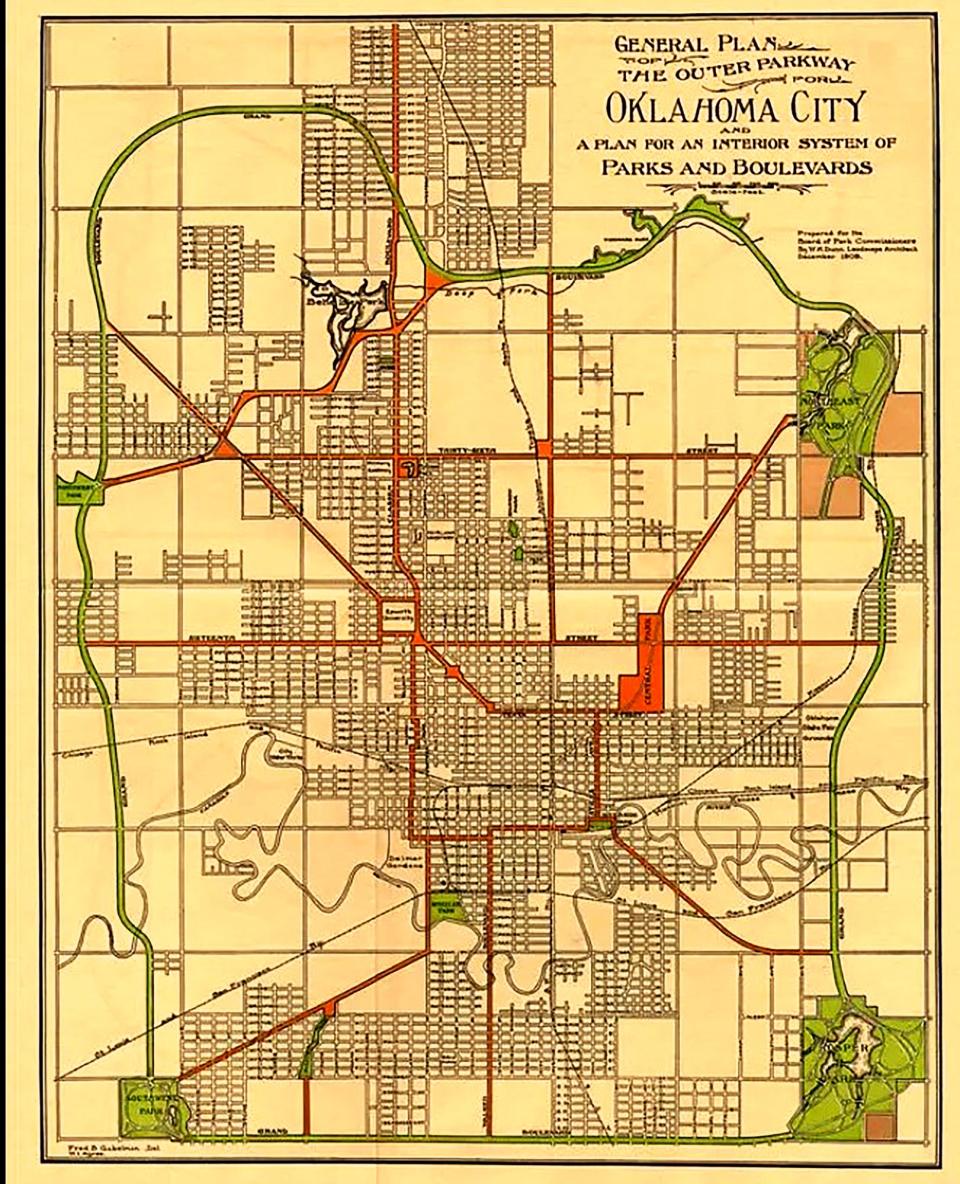
The Deep Fork Trail, once fully built, will complete a vision to re-create the Grand Boulevard loop around the older urban core that city fathers once envisioned as a connection between the city’s oldest regional parks — Will Rogers, Woodson, Trosper and Lincoln.
Much of the 1910 plan for the beltline was built, and parts of it can be found in north and south Oklahoma City. The beltline, however, was replaced with interstate highways that used up the Grand Boulevard alignment.
More: Want to get outdoors this spring? Check out these 6 walking trails in Oklahoma City
The Bike-Walk OKC master plan estimates the restored loop will connect to seven of the city’s regional parks, 28 neighborhood parks, 17 schools and 170 transit stops. The loop also includes connections to Lake Hefner, the Oklahoma River and the OKC Fairgrounds.
“A facility of this length is a rare asset for a city to have, and should be celebrated for what it provides, as well as what it could mean for future growth of the city,” planners wrote. “Completion of the loop could leverage investment already made along major portions of the alignment and spark development opportunities.”
Progress of the loop can be seen on Wright’s YouTube page where he posts videos of new trail segments and those still under construction. His favorite ride is along the Katy Trail (in northeast Oklahoma City) with its bridges and extensive tree canopy.
“I think the Deep Fork Trail will exceed that and it will be really beautiful,” Wright said. “A lot of it is along I-44 and when you’re on I-44, you only see I-44. You don’t know there is a beautiful creek area next to you.”
Safety for pedestrians and bicyclists a priority with Bike-Walk OKC master plan
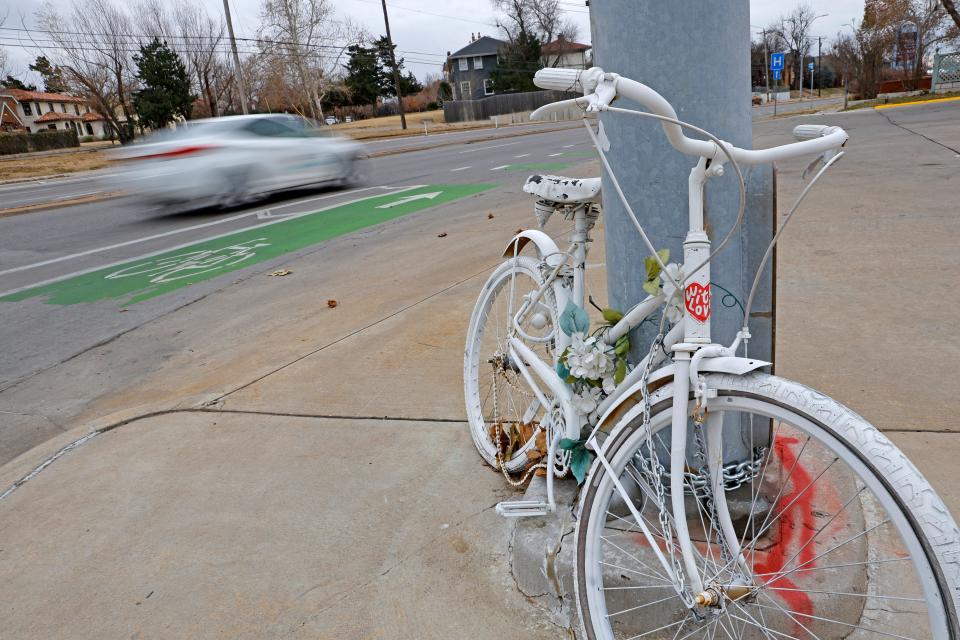
One of Oklahoma City’s newest dedicated bike lanes opened earlier this year along Classen Boulevard between NW 10 and NW 16. Engineers at City Hall balked at the idea of narrowing the boulevard to make way for bike lanes but then encountered community protests after the 2019 death of Chad Epley, who at age 31 had just been named co-executive chef at Vast.
The city was warned by bicycle advocates five years earlier that the street was dangerous for pedestrians and bicyclists. A “ghost bike,” painted white, was placed at the corner where Epley died as a memorial to the chef.
The bike remains on display. The dedicated bike lane city engineers claimed was not feasible was built along both sides of Classen Boulevard between NW 10 and NW 16 and opened earlier this year.
More: Edmond's efforts to build its growing trail system roll on with grant awards
Oklahoma Transportation Department reports confirm the dangers faced by pedestrians with 2,421 unique reports of pedestrians hit by vehicles, 232 of which ended in death, in Oklahoma City between 2003 and 2020. Another 962 incidents of vehicle drivers crashing into bicyclists, 19 of which, including Epley, were fatal.
The Deep Fork Trail, when completed, will allow pedestrians and bicyclists to safely travel through the busy Interstate 235/Interstate 44 junction. The Bike-Walk OKC plan notes such barriers are a leading reason why more people do not walk or cycle to their destinations.

The city earlier this year opened a 121-foot-long bridge over the six-lane Northwest Expressway. The $5.3 million bridge, east of Wilshire Boulevard, links the Lake Hefner and Lake Overholser trails. The design by MacArthur Associates Consultants reflects classic cars from the ‘40s, ‘50s and ‘60s, nearby airports, Wiley Post and Clarence E. Page, and their aviation heritage.
Construction is set to start in 2024 on yet another pedestrian bridge that will connect trails on the north shore of the Oklahoma River with trails on the south shore connecting Bricktown, Riversport Adventure Parks and the future OKANA resort.
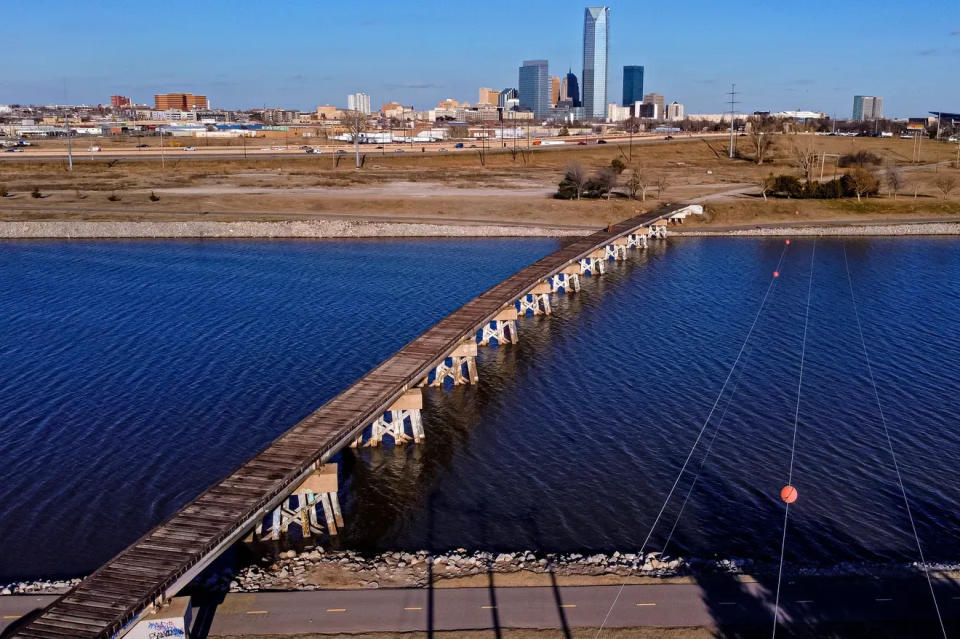
Design work, meanwhile, is underway to convert an abandoned railroad bridge overlooking the river between Exchange and Western avenues, near the Stockyards and Wheeler districts on the south shore and Farmers Public Market and Wheeler Park on the north shore.
As the city connects and creates a trails network for commuting, attention is turning to providing amenities aimed at users’ safety, ease of getting around and restroom and watering stops.
Solar lights already are installed along the Oklahoma River, Katy and Greenway trails. The city also recently completed wayfinding signs that identify parking locations, mile markers and trail heads.
The most extensive trailhead to date is being built at Riversport and will include a cafe, bike repair shop and restrooms.
McMillan-Miller said ongoing expansion of the trails system still includes the recreational and park activities first envisioned with the original trails around Lake Hefner.
“We want to create a lot of cool play areas,” McMillan-Miller said. “There’s a high point, an area with a playground that can be shaped into the hillside, taking advantage of the trees, to create an active recreational area along the Deep Fork.”
Regional trails network being built
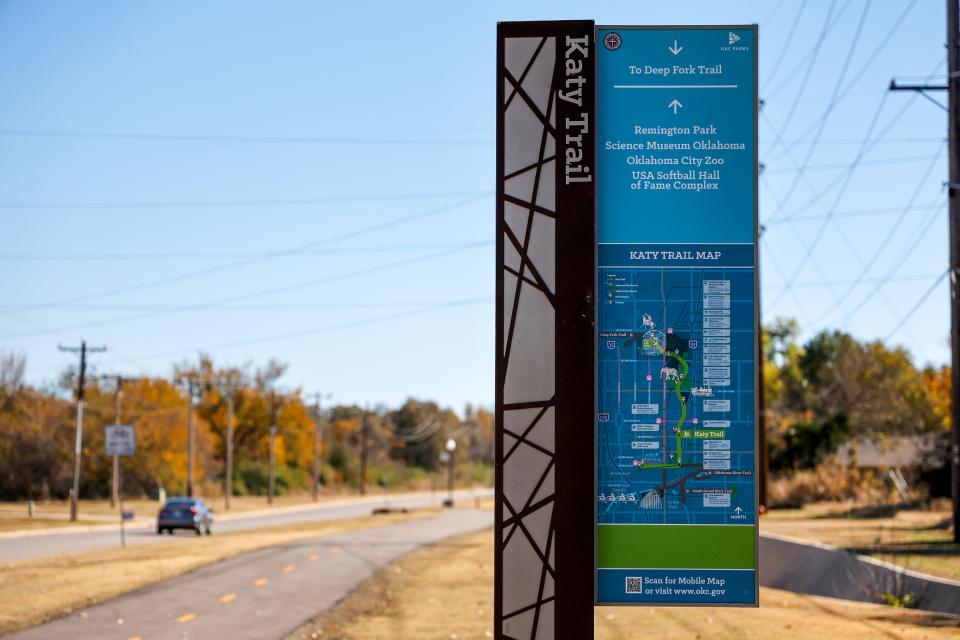
The Deep Fork Trails connection from the Adventure District in northeast Oklahoma City to Lake Hefner is not possible without connections to trails built by Nichols Hills along Grand Boulevard Park.
The 8.5-mile Tinker-Draper Trail starts at the Interstate 40/Interstate 35 junction and passes the Del City trails as it continues to the north side of Lake Stanley Draper.
Similar connections are envisioned long term with Edmond, Midwest City, Moore, Norman and other suburbs building their own trails.
McMillan-Miller said an opportunity for a trails extension also exists with planned expansions of the Kickapoo Turnpike.
“The connections are there,” McMillan-Miller said. “Our trails are being built to the city limits. We have discussions going on with Moore and Norman, and they are very interested in connecting the trails.”
Public awareness of trails network growing, but still not widespread
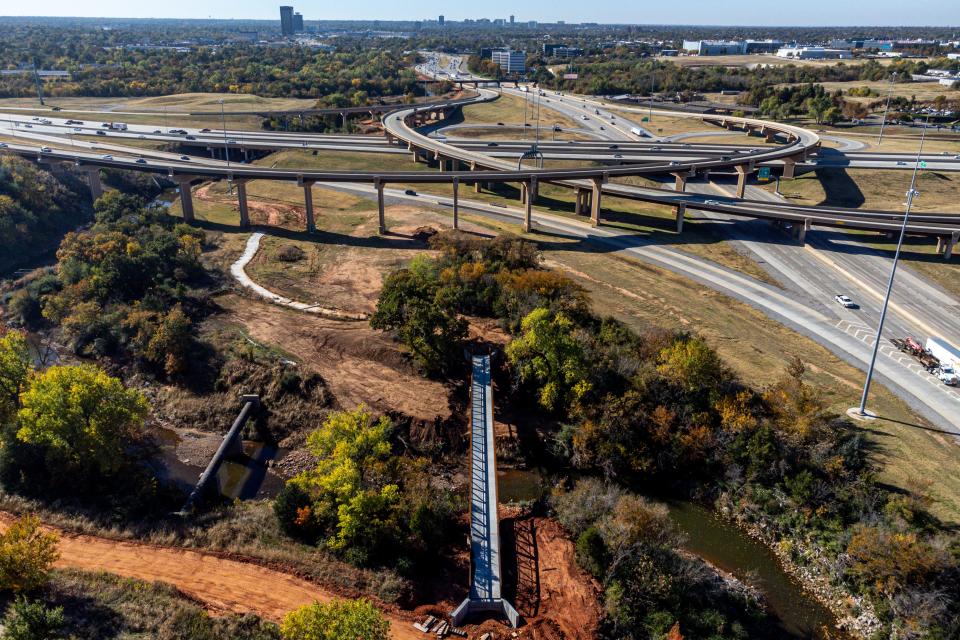
The original trails at Lake Hefner, named after the late longtime booster Bert Cooper, also are the best used and best known by residents and visitors. The parks department reports the 9.8-mile trail sees more than 1 million annual visits.
The trails are visible to an estimated daily commute of 109,000 drivers along the nearby Lake Hefner Parkway.
Amenities along the trails include the Lake Hefner Golf Course, Stars & Stripes Park, Lions’ Children’s Park, the Oklahoma City Yacht Club, East Wharf, fishing docks, a remote-control aircraft field, boat ramps and picnic tables.
The trails also extend from Lake Hefner to more pathways through White Hall, Bluff Creek and Summerfield neighborhoods. Along with the availability of water fountains and portable toilets, the Cooper trails represent much of the vision laid out in Bike-Walk OKC.
The Deep Fork Trails will enjoy similar visibility as it passes I-44 through the Adventure District. But even then, McMillan-Miller acknowledges more marketing and education are needed to increase awareness among residents.
“People say ‘I have no idea you offer this,’” McMillan-Miller said. “People who move to Oklahoma City, the newer residents, they seem to come to Oklahoma City knowing all this already. They've researched it before moving.”
Newcomers, she said, are educating residents unaware of the trails often being built within walking distance of where they live, work and play.
“It's been interesting seeing a flip in newer residents being more informed of the recreational opts we have,” McMIllan-Miller said. “They’re informing others who have been here a long time.”
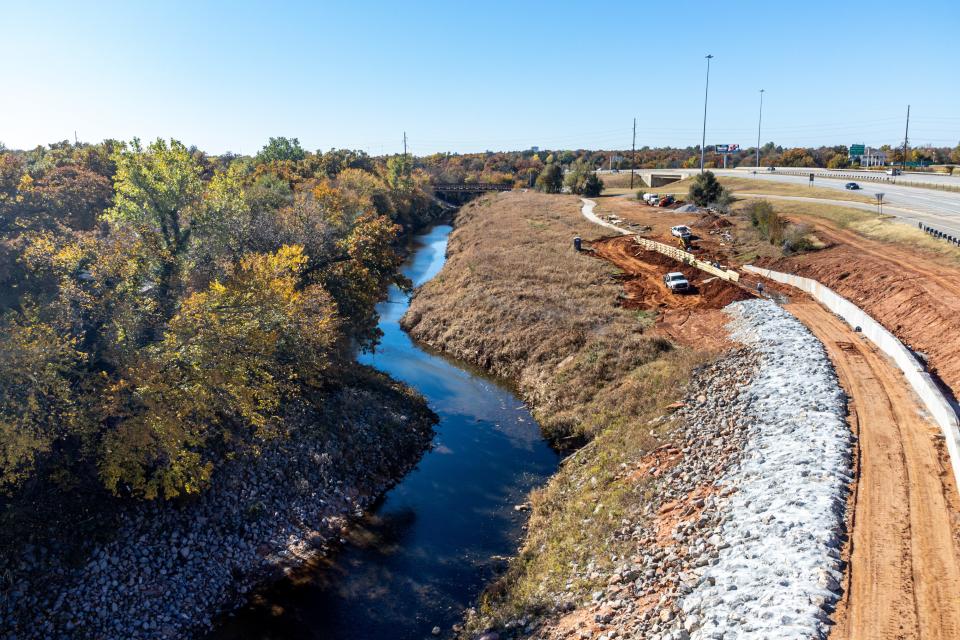
This article originally appeared on Oklahoman: OKC trails expansion introducing car-free alternative to travel

